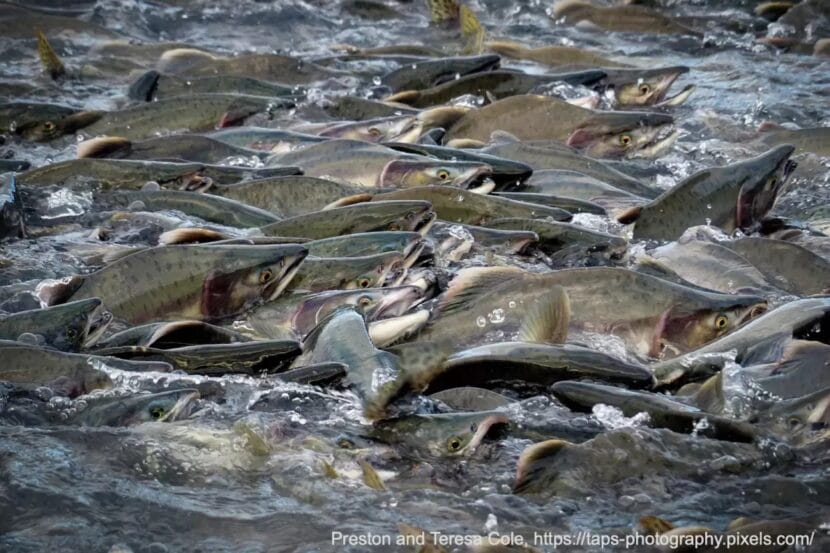
A new scientific paper published this fall shows that the pink salmon population is booming in the North Pacific Ocean, and global warming is helping it happen. The new evidence suggests that pinks are not just outcompeting other salmon species but they’re affecting the whole ecosystem — from the microscopic to large marine whales.
“Pink salmon are one of the winners in terms of climate change,” said Greg Ruggerone, a salmon researcher and lead author of the new 40-page paper published Sept. 21 in the scientific journal, Marine Ecology Progress Series.
But for every winner, there is a loser — or in this case, several. The new research shows that the spike in pink salmon in recent decades is affecting the ocean’s fragile food chain. Pink salmon run on an every-other-year cycle. The population in the odd number years is 25% greater than even number years. And when pink numbers are up, other species are down.
“From phytoplankton, zooplankton, forage fishes, all five species of Pacific salmon, and so forth and marine birds. It all points to pink salmon,” Ruggerone said.
Scientists don’t know all the reasons that pink salmon are doing better in warmer waters. But they do know that pinks are better than other salmon species at finding prey and growing from their nutrients. In fact, they’re the fastest-growing salmon, ready to spawn in just two years, three times faster than kings.
Plus, hatcheries are bolstering their population — pumping roughly 5 billion salmon annually into the Pacific Ocean, mostly pink and chum.
The general assumption is that the ocean has sufficient capacity to support them all. But Ruggerone said his new paper proves that’s not the case.
“I think the evidence that we provided leads to the observation that the ocean has a limited carrying capacity to support both wild salmon plus massive numbers of hatchery, chum and pink salmon released into the North Pacific,” he said.
His new research shows that when pink salmon are especially abundant, that’s when other species suffer. Pinks eat a ton of prey from zooplankton to small fish. In turn, this creates:
- Smaller and fewer other salmon species as well as steelhead trout
- Less growth in Alaska’s herring population
- A 33% lower birth rate in humpback whales in Southeast Alaska
- And higher mortality and lower birth rates in endangered orcas in Puget Sound.
The study also connects the pink salmon cycle to nearly a dozen species of seabirds.
“They laid more eggs on even years, good years than they did on odd years, bad years,” said Alan Springer, co-author of the study and a seabird researcher with the University of Alaska Fairbanks.
Springer said they got data from scientists all over the world who had found biennial patterns.
“A variety of associated reproductive kinds of parameters all varied in lockstep with that even-odd year pattern in pink salmon,” he said.
Things like emaciated and starving shearwater birds on an every-other-year cycle.
The scientists say there is no evidence for other explanations for the biennial patterns that have been recorded.
“You know, sea surface temperature or wind speeds or these atmospheric indexes of, whatever, failed to show any kind of similar patterns,” said Springer. “So that’s kind of what for us is the bottom line.”
The Alaska Department of Fish and Game is skeptical of the paper’s findings. Commissioner Doug Vicent-Lang, in a written response, called the paper a “hypothesis” and said it’s “the subject of an ongoing debate among scientists.”
“The conclusions put forth are stated as more definitive than the strength of the evidence that backs them up,” he wrote.
The researchers agree that it’s a hypothesis — but a strong one. The data shows connections but doesn’t answer all the reasons why.
“More research is certainly needed,” Ruggerone said. “But again, with the synthesis paper, an important part of it is just the consistency in the relationships across all these different taxa.”
Taxa meaning a biological group.
The authors hope that other scientists take their findings and dig deeper into all the ways the large pink salmon population could be affecting other species in the North Pacific. And timing is of the essence as ocean temperatures are expected to rise.